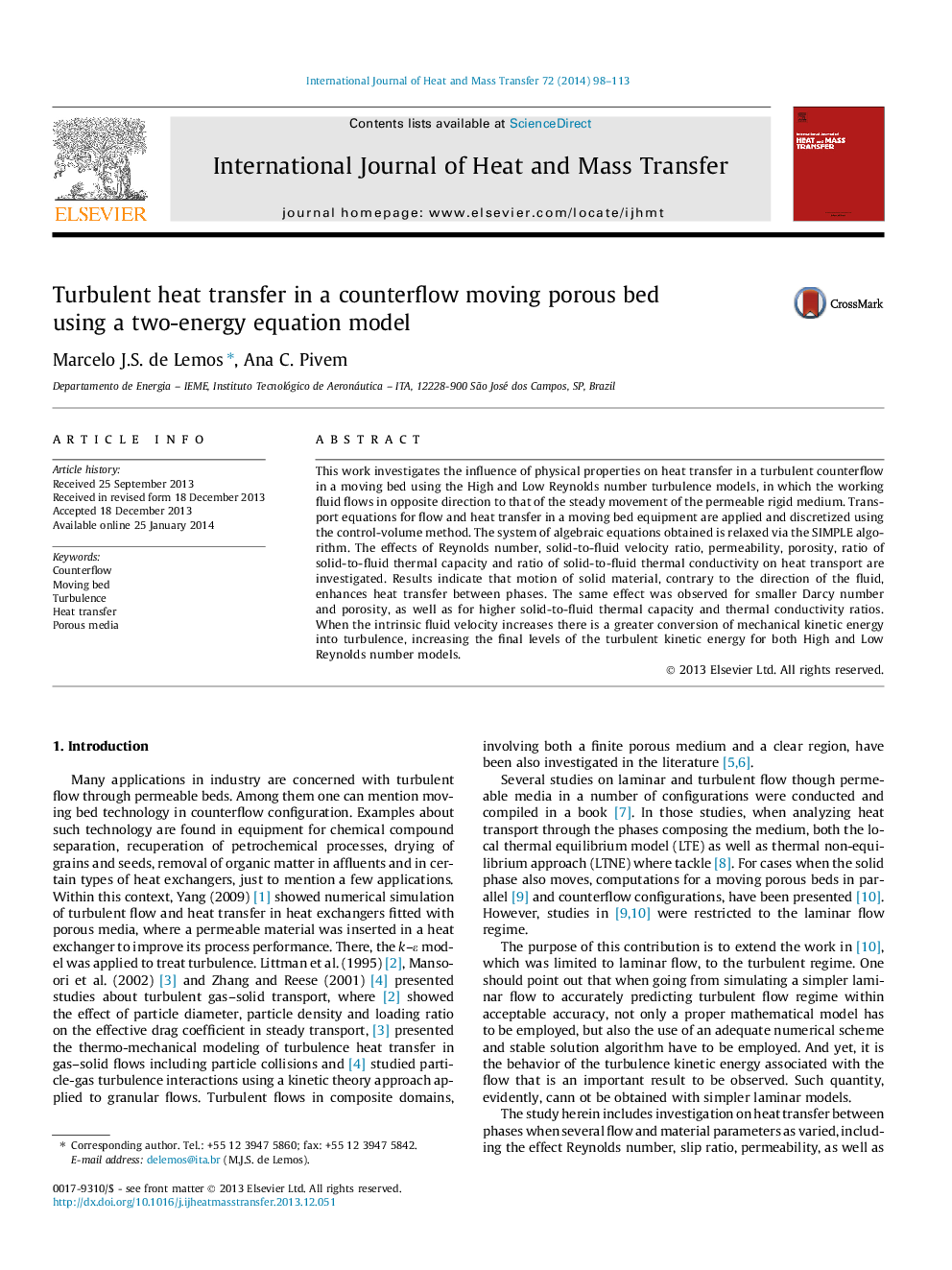| Article ID | Journal | Published Year | Pages | File Type |
|---|---|---|---|---|
| 7057195 | International Journal of Heat and Mass Transfer | 2014 | 16 Pages |
Abstract
This work investigates the influence of physical properties on heat transfer in a turbulent counterflow in a moving bed using the High and Low Reynolds number turbulence models, in which the working fluid flows in opposite direction to that of the steady movement of the permeable rigid medium. Transport equations for flow and heat transfer in a moving bed equipment are applied and discretized using the control-volume method. The system of algebraic equations obtained is relaxed via the SIMPLE algorithm. The effects of Reynolds number, solid-to-fluid velocity ratio, permeability, porosity, ratio of solid-to-fluid thermal capacity and ratio of solid-to-fluid thermal conductivity on heat transport are investigated. Results indicate that motion of solid material, contrary to the direction of the fluid, enhances heat transfer between phases. The same effect was observed for smaller Darcy number and porosity, as well as for higher solid-to-fluid thermal capacity and thermal conductivity ratios. When the intrinsic fluid velocity increases there is a greater conversion of mechanical kinetic energy into turbulence, increasing the final levels of the turbulent kinetic energy for both High and Low Reynolds number models.
Related Topics
Physical Sciences and Engineering
Chemical Engineering
Fluid Flow and Transfer Processes
Authors
Marcelo J.S. de Lemos, Ana C. Pivem,
